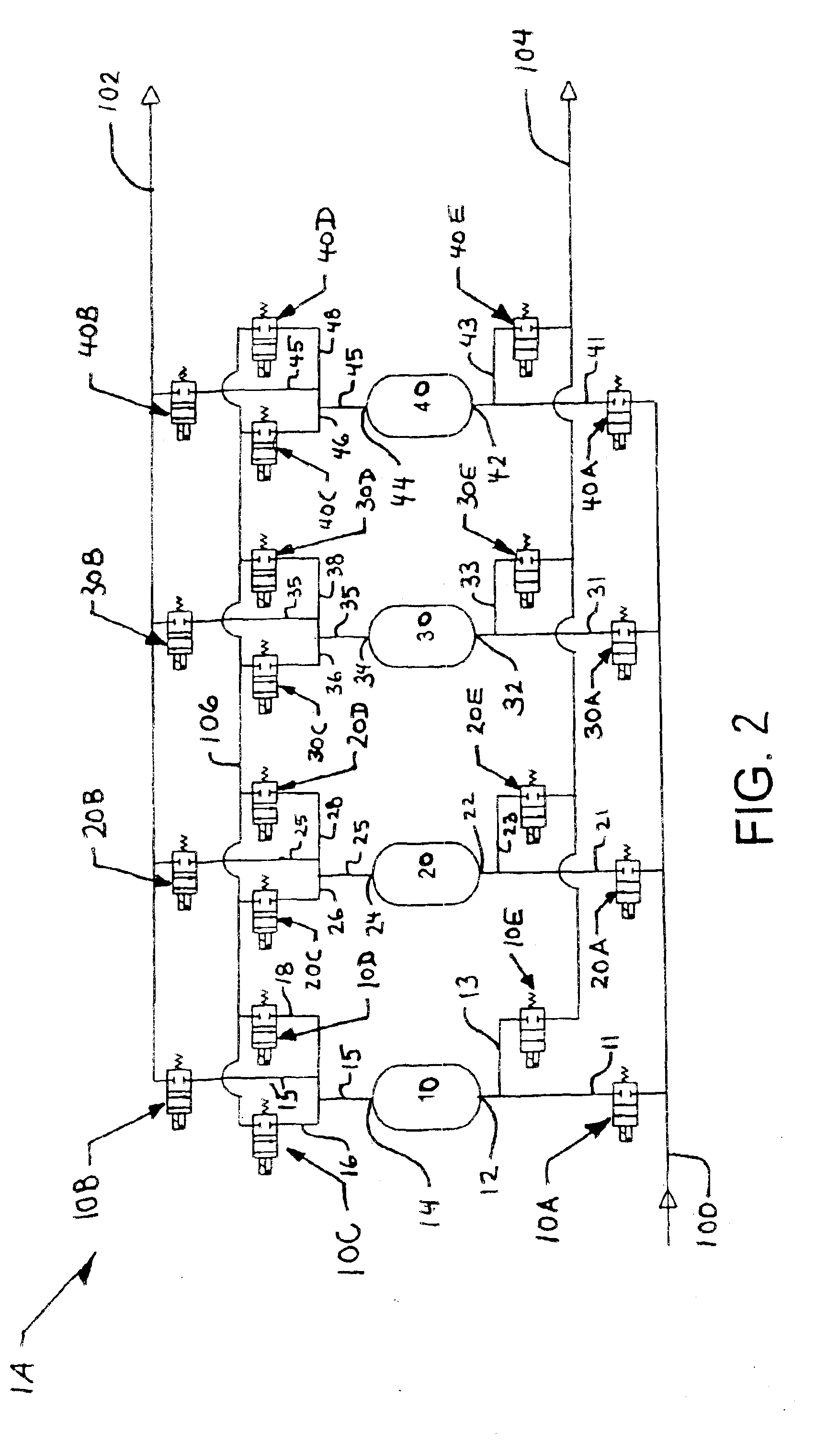High recovery PSA cycles and apparatus with reduced complexity
a psa cycle and high recovery technology, applied in the field of pressure swing adsorption systems, can solve the problems of increasing the number of valves required, increasing increasing the cost of valves, etc., and achieve the effect of reducing the complexity of psa equipment and improving the psa operating cycl
- Summary
- Abstract
- Description
- Claims
- Application Information
AI Technical Summary
Benefits of technology
Problems solved by technology
Method used
Image
Examples
Embodiment Construction
Embodiments of the present invention will be described hereinafter with reference to the accompanying drawings. In the following description, the constituent elements having substantially the same function and arrangement are denoted by the same reference numerals, and repetitive descriptions will be made only when necessary.
FIG. 1 depicts a cycle diagram for a four vessel pressure swing adsorption (PSA) cycle including a two-stage pressure equalization. FIG. 2 depicts a valve diagram of an improved PSA system 1A that can be used to execute the four vessel PSA cycle depicted in FIG. 1.
FIG. 2 depicts a PSA system 1A that includes a first vessel 10, a second vessel 20, a third vessel 30, and a fourth vessel 40. Each of the vessels typically includes a bed of adsorption material. The vessels 10, 20, 30, and 40 are connected in parallel flow relation between a source manifold 100, which supplies a feed gas mixture, and a product manifold 102, which provides an outlet for unabsorbed prod...
PUM
 Login to View More
Login to View More Abstract
Description
Claims
Application Information
 Login to View More
Login to View More - R&D
- Intellectual Property
- Life Sciences
- Materials
- Tech Scout
- Unparalleled Data Quality
- Higher Quality Content
- 60% Fewer Hallucinations
Browse by: Latest US Patents, China's latest patents, Technical Efficacy Thesaurus, Application Domain, Technology Topic, Popular Technical Reports.
© 2025 PatSnap. All rights reserved.Legal|Privacy policy|Modern Slavery Act Transparency Statement|Sitemap|About US| Contact US: help@patsnap.com



